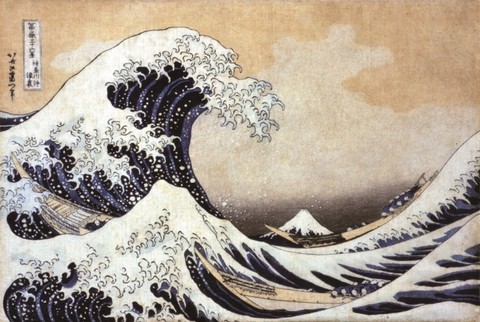
江戸木版画は、墨一色の版画の上に色を筆で彩色していくようになり、これらは丹絵、紅絵、漆絵として進歩してきましたが、色を板木で摺る工夫がなされ、二、三色の色摺版画(紅摺絵)ができました。さらに、明和2年(1765 年)には、金や銀まで摺り込み、中間色も木版で刷り上げることができるようになり、多色摺りのスタイルが確立されました。
江戸木版画の製造の技術・技法は江戸時代に確立し、その技術・技法は改良を重ねながら発展して今日まで継承され、東京都を中心として伝統的に製造されています。

Edo Mokuhanga are woodblock prints that began with a black print that was then colored with a brush.
They evolved into "tane", "benie", and "urushie", eventually resulting in a printing technique where the colors were applied to the wood print and printed directly, followed by two and three-color prints (benizurie). Further in 1765, gold and silver began being printed, and secondary colors also began to be printed, and the multicolored style was established.
The techniques and skills used in Edo Mokuhanga wood block printing were established in the Edo period, and these techniques have continued to be improved upon, carrying on the present day where they are still produced mainly in the Tokyo region.